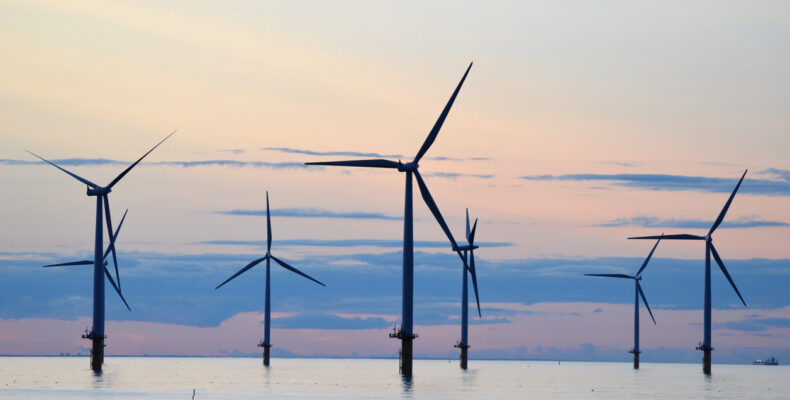
Harnessing the wind at sea: overcoming challenges through innovation
Wind power can be broadly classified into two types. The more familiar type is onshore wind power. The wind turbines one sees in their towering, white glory on the side of the motorway from time to time fall under this category.
The less familiar type is offshore wind power where wind turbines are placed in bodies of water, typically the sea. This type of wind power has two benefits over its onshore alternative. The first is that wind speed tends to be higher and more consistent over the ocean than on land, permitting more energy to be generated per wind turbine, and for the supply of electricity to be more consistent. The second benefit is that offshore wind turbines are less intrusive for human populations – the visual effect and noise they produce is not as large an issue as it is for their onshore counterparts.
Despite these benefits, offshore wind power is not without considerable challenges. The technology is more expensive than onshore wind power, the supply chains for implementing the turbines are more complex and less developed, and there are greater technical problems to overcome.
The EPO/IRENA report 2023
In late 2023, the European Patent Office (EPO) and International Renewable Energy Agency (IRENA) published a joint patent insight report to investigate trends in the offshore wind industry. This report gives an insight into the technologies that players in the market are devoting research and development resources towards.
From 2002 to 2022, there were 17,000 patent families published relating to offshore wind. There was also an average annual increase of 18% in patent applications relating to offshore wind in this period.
Overcoming challenges through innovation
The EPO/IRENA report identifies seven different technology concept groupings. Here we will review two of these to see how the industry is overcoming challenges it faces.
Fixed and floating foundations
The predominant form that offshore wind farms take is that of fixed foundation turbines – wind turbines that are fixed to the seabed. However, 80% of the world’s offshore wind resources are in waters deeper than 60 metres. There are significant technical and economic challenges to using fixed foundation turbines at these depths.
Floating foundations for wind turbines is a technology that is looking to circumvent the problems faced by fixed turbines by using floating platforms to which the wind turbine is anchored. Patent filings reflect the increase in resources being devoted to this potential solution. Patents for floating foundations have grown by an order of magnitude since 2002 and represented 80% of the patents filed for offshore wind foundations in 2022.
The implementation of floating wind turbines can unlock markets in which the fixed foundation turbines are unsuitable. The West Coast of the USA in particular lacks an appreciable shallow continental shelf and is an example of a market that could be expanded by use of floating systems. The patent filings data would appear to reflect this, as the USA is the world leader in the number of patents filed over the last two decades in the floating foundation technology area.
Energy storage
Being able to store energy generated allows for a more flexible energy supply. Wind power is not constant in its energy generation and there is thus demand in the industry for means to store excess energy produced during higher production periods.
The number of international patent families (IPFs) relating to energy storage solutions with offshore wind plants has quadrupled over the last four years. This has largely been driven by innovation in electrolysers for hydrogen production – 63% of the IPFs filed in 2022 in the energy storage area were for on-site offshore electrolysers.
Offshore hydrogen has the additional benefit of offering repurposing of existing oil and gas infrastructure that may otherwise become stranded as countries move away from these energy sources. Guidehouse and Enersea carried out a study in 2023 indicating that this repurposing could be made available in the North Sea as early as 2030. This repurposing is not only cost effective – offering up to 90% reduction in cost – but also eliminates the environmental impact caused by installing new pipelines.
Future innovation
Offshore wind technology is an industry with rapid technological advancement and actors in the market are continuously innovating to overcome the challenges they face. If offshore wind is to play a significant part in combating climate change, this innovation and the patent protection that incentivizes it seem sure to be important.
Barker Brettell has a dedicated energy sector group. If you would like to discuss options for protecting your invention, please get in touch with the author or your usual Barker Brettell patent attorney.



